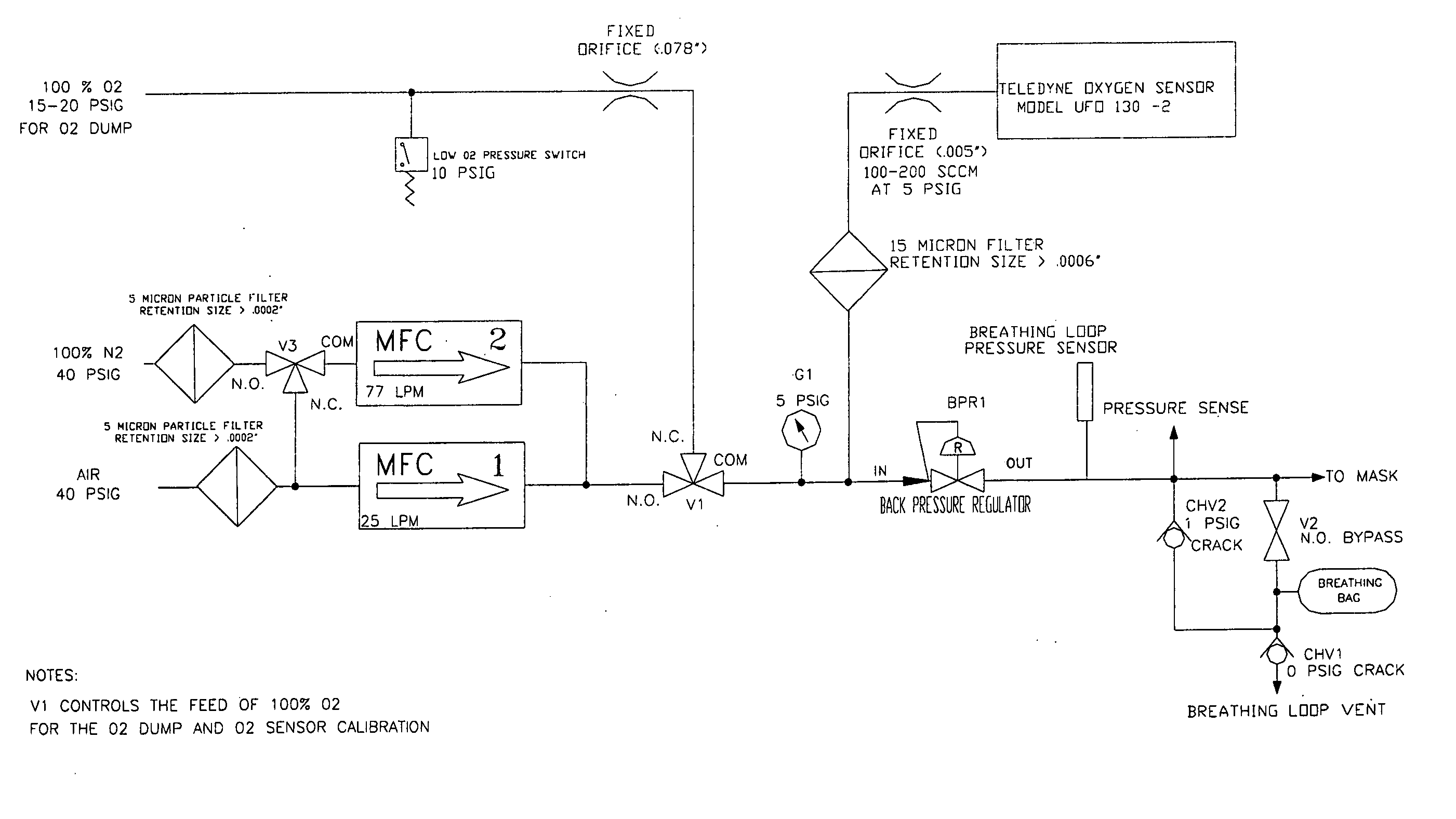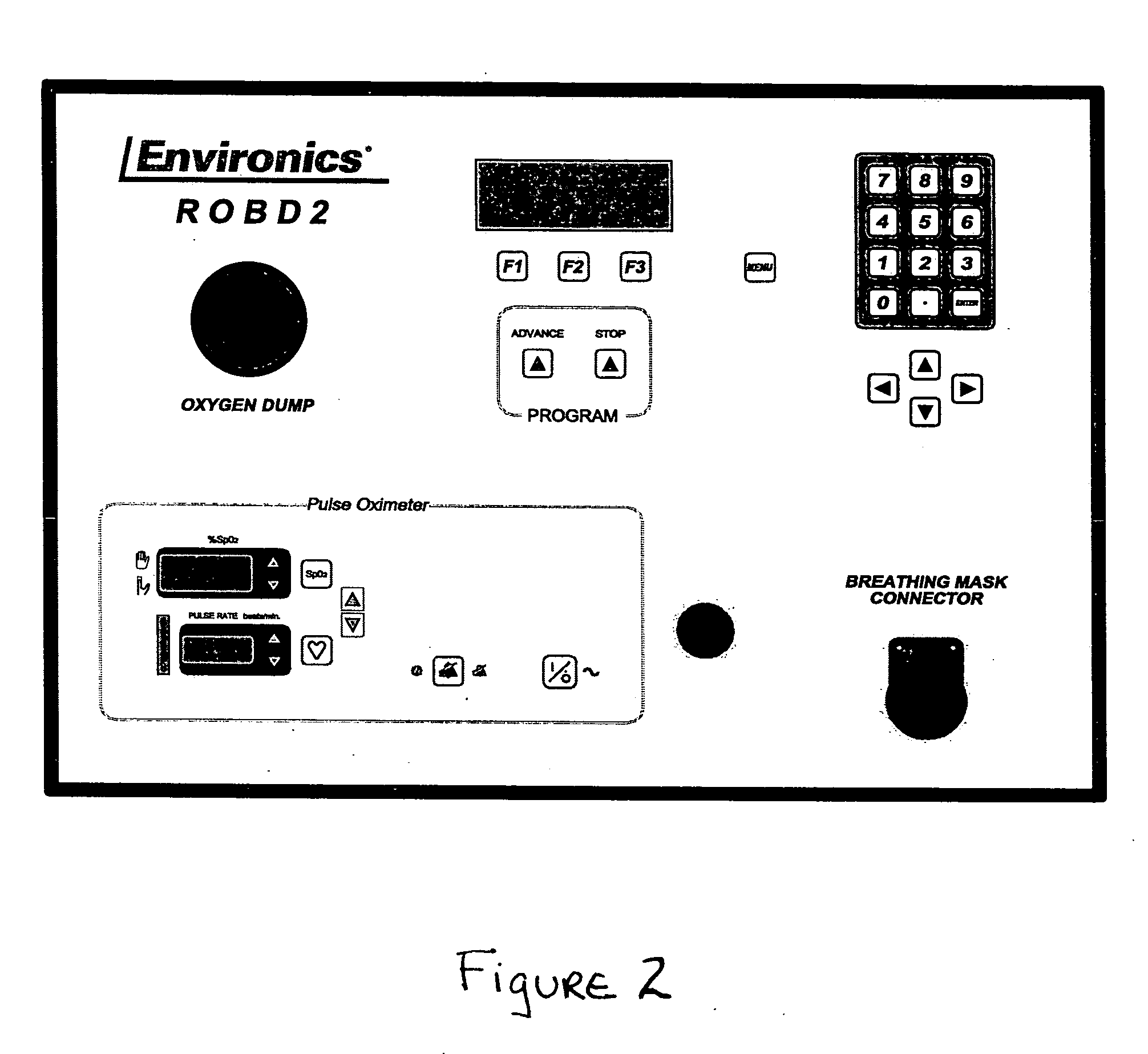Reduced-oxygen breathing device
a breathing device and oxygen technology, applied in the field of oxygen breathing devices, can solve the problems of tissue hypoxia, sleep disorders, pulmonary edema to death, and most individuals do not have the time to acclimatize, and achieve the effect of preventing the system from running
- Summary
- Abstract
- Description
- Claims
- Application Information
AI Technical Summary
Benefits of technology
Problems solved by technology
Method used
Image
Examples
Embodiment Construction
[0057] The present invention is an improvement to the 003′ ROBD which, in part, consisted of the following elements: an open gas-mixing chamber, in the form of a loop; a quick-disconnect fitting located on one end of the loop, allowing fittings such as a standard aviator's oxygen mask; the other end of the apparatus contains a one-way valve for entrance of ambient air into the loop during inspiration; an oxygen sensor is mounted in the mixing loop. In the 003′ ROBD, at the start of inspiration, ambient air is drawn into the loop and a personal computer, executing a NAMRL developed gas mixture control program, was used to control and monitor the concentration of oxygen in the loop just downstream from a mixing fan. The measured percentage of oxygen in the loop of the 003′ invention was compared to a target level of oxygen and operated as follows: if the loop oxygen concentration exceeds the target value, the software controller actuated a solenoid valve connected to a cylinder of nit...
PUM
 Login to View More
Login to View More Abstract
Description
Claims
Application Information
 Login to View More
Login to View More - R&D
- Intellectual Property
- Life Sciences
- Materials
- Tech Scout
- Unparalleled Data Quality
- Higher Quality Content
- 60% Fewer Hallucinations
Browse by: Latest US Patents, China's latest patents, Technical Efficacy Thesaurus, Application Domain, Technology Topic, Popular Technical Reports.
© 2025 PatSnap. All rights reserved.Legal|Privacy policy|Modern Slavery Act Transparency Statement|Sitemap|About US| Contact US: help@patsnap.com



